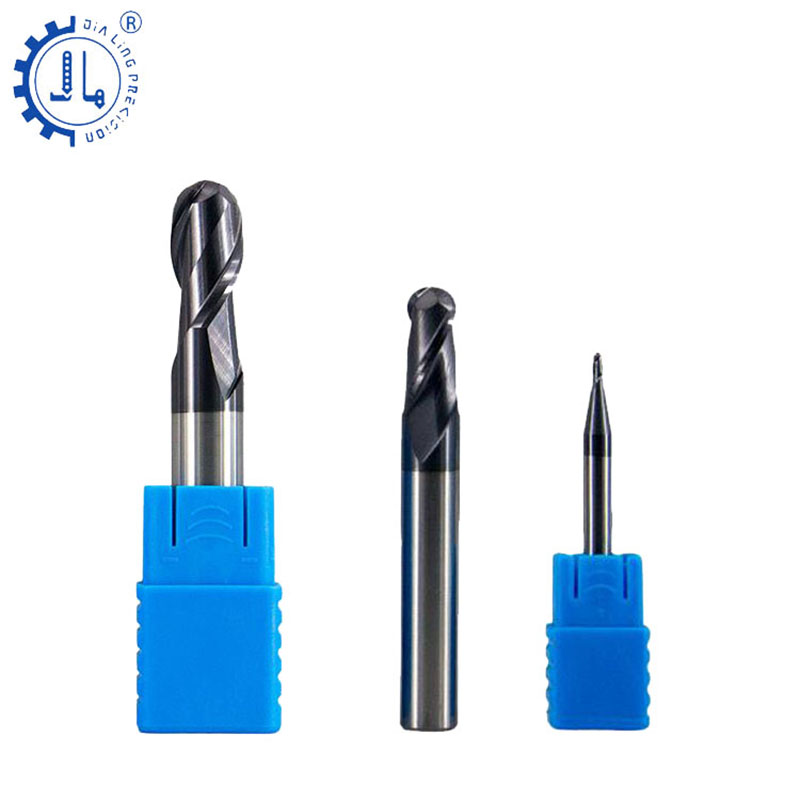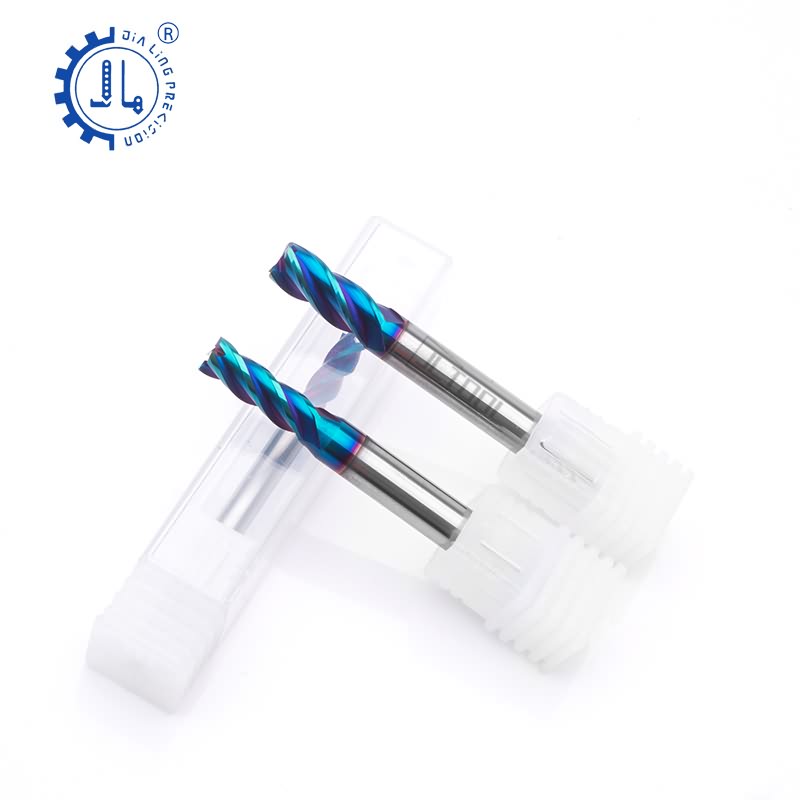Carbide end mill 2
Milling cutter is a widely used multi-edge rotary cutter, and there are many kinds of it. According to the purpose, there are: 1) for processing planes, such as cylindrical face milling cutters, end mills, etc.; 2) for processing grooves, such as end mills, T-shaped cutters, and angle milling cutters, etc.; 3) processing formed surfaces Used, such as convex semicircular and concave semicircular milling cutters and milling cutters for processing other complex shaped surfaces. The productivity of milling is generally higher, and the surface roughness value of the machined surface is larger.
1. Introduction to common milling cutters
(1) Cylindrical milling cutter: cutting with the cutting edge on the circumference
①Outer diameter D: 50, 63, 80, 100; Aperture: 22, 27, 32, 40
②The principle of tool selection: L tool>B workpiece; D as small as possible
(3) Keyway milling cutter:
① Divided into straight shank and tapered shank;
②Features:
a) Only two cutter teeth;
b) Diameter accuracy: e8—> the keyway with the machining groove width accuracy of H9, d8—> the keyway with the machining groove width accuracy of N9;
HRC55 2 Flutes Carbide Ball Nose End Mill
c) The face edge is the main cutting edge, and the circumferential edge is the secondary cutting edge, which can feed axially;
d) When the tool is re-grinding, only the end face is sharpened (the diameter remains unchanged).
(4) Sharp tooth slot milling cutter:
①Diameter D=50, 63, 80, 100, 125
②Width L=4~25, precision k8
③Machining H9 slot
④The end face has no edge, and the width changes little after regrind.
(5) Three-sided edge milling cutter
① Divided into straight teeth (type Ⅰ and type Ⅱ), staggered teeth (with edge inclination) and insert teeth (recoverable tool width)
②Features: There are blades on three sides, and the surface quality is good; the width dimension changes greatly after regrinding
③Accuracy: outer diameter (js16), width (normal grade k11 and precision grade k8)
④Application:
Single use: milling the groove of the arc tail
Two-tool combination: processing both sides at the same time (the distance between the two sides is controlled by the middle spacer)
Figure: Milling arc tail slot combination milling cutter
(6) Mold milling cutter-processing mold surface and cavity
①High-speed steel: divided into conical, conical ball head and cylindrical ball head, and divided into straight shank, flat straight shank, Morse taper shank
②Carbide rotary file
Trimming and deburring of mold cavity after quenching (HRC<65)
2. Reasonable choice of milling cutter geometric angle:
Selection basis: same as turning tool, but
①Rake angle: smaller than turning tool
②Rear angle: larger than turning tool
③Blade inclination: it is the helix angle of the tool
③It is divided into coarse teeth and fine teeth, and the two are divided into straight grooves (not commonly used) and spiral grooves (left-handed and right-handed)
When processing free-form surfaces (molds), since the end cutting speed of the ball-end tool is zero, in order to ensure the machining accuracy, the cutting line spacing generally adopts the top-end dense pitch, so the ball end is often used for surface finishing. The flat-end tool is better than the ball-end tool in terms of surface processing quality and cutting efficiency. Therefore, as long as it is guaranteed not to cut, whether it is roughing or finishing of curved surfaces, flat-end tools should be preferred. In addition, the durability and accuracy of cutting tools have a great relationship with the price of cutting tools, which must be paid attention to.
HRC65 Solid Carbide 4 Flute Square End Mill
Post time: Sep-11-2020

